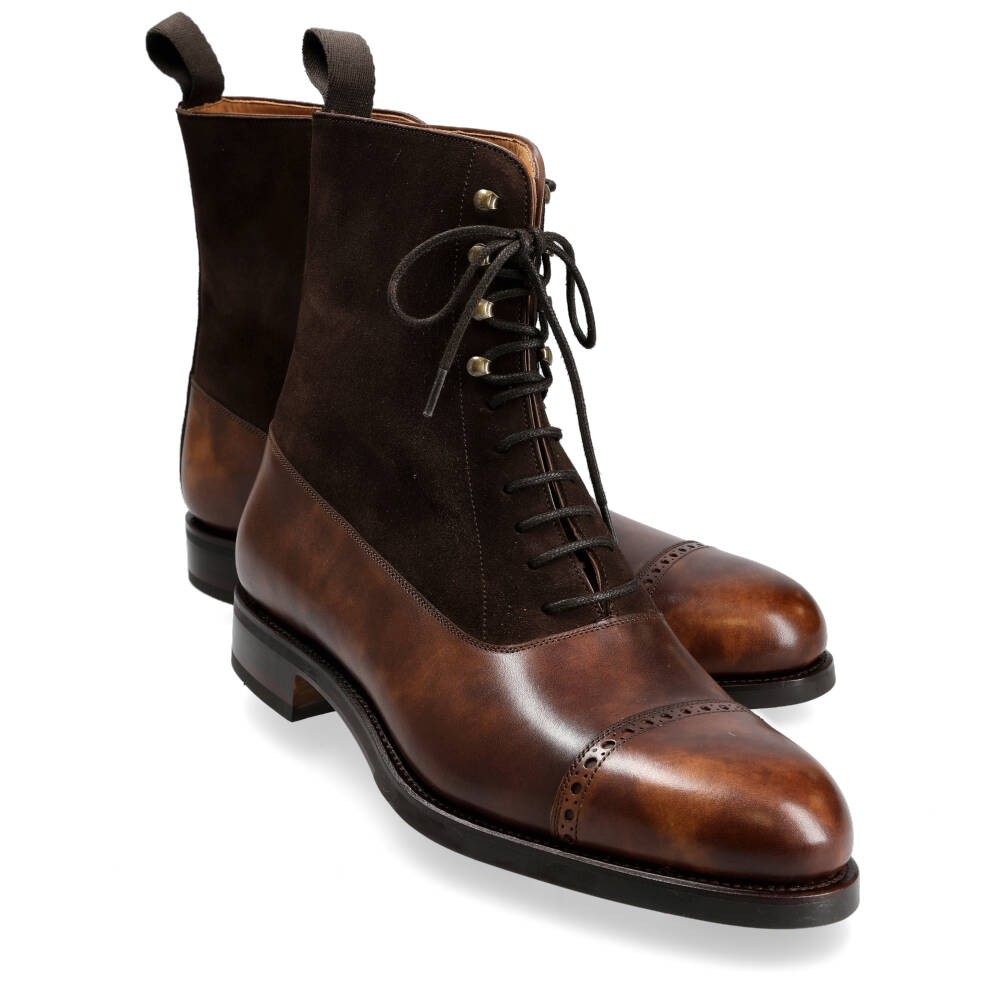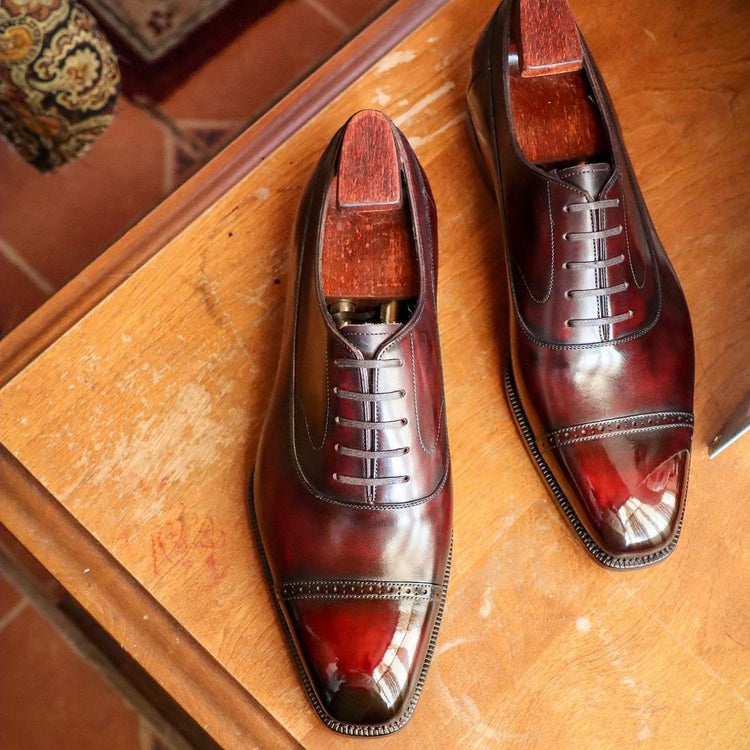Archivist
Senior Member
- Joined
- Jan 23, 2010
- Messages
- 688
- Reaction score
- 34
A friend found this in a book of essays and sent me a scanned copy. I've never seen it online. I have transcribed it here for your enjoyment. I apologize for any errors in transcription.
-Archivist.
Daily Express, 13 February 1929.
Evelyn Waugh
BEAU BRUMMELLS on £60 A YEAR.
Of course, there is really only one way of being perfectly dressed - that is, to be grossly rich. You may have exquisite discrimination and the elegance of a gigolo, but you can never rival the millionaire if he has even the faintest inclination towards smartness. He orders suits as you order collars, by the dozen. His valet wears them for the first three days so that they never look new, and confiscates them after three months so that they never look old. He basks in a perpetual high noon of bland magnificence.
It is useless to compete against him. If your object in choosing your clothes is to give an impression of wealth, you had far better adopt a pose of reckless dowdiness and spend your money in maintaining under a hat green and mildewed with age a cigar of fabulous proportions. If, however, you have no intention of deceit, but simply, for some reason, happen to like being well dressed, it is essential to have at least two tailors.
There are about a dozen first-rate tailors in London whose names you may always see quoted by the purveyors of ‘mis-fit’ clothing. Below them are about a hundred rather expensive eminently respectable unobtrusive shops in fashionable streets, where your uncles have bought their clothes since undergraduate days. Below them are several hundreds of quite cheap very busy little shops in the City and business quarters. The secret of being well dressed on a moderate income is to choose one of the first-rate and and one of the third-rate tailors and maintain a happy balance between them.
There are some things, an evening tail-coat for instance, which only a first-rate tailor can make. On the other hand, the difference between a pair of white flannel trousers costing five guineas in Savile Row or George Street and one costing two guineas in the Strand is practically negligible. The same applies to almost all country clothes. It is not necessary or particularly desirable that these, except of course the riding breeches, should be obtrusively well cut.
The chief disadvantage of small tailors is that they usually have such a very depressing selection of patterns. It is a good plan to buy all your tweeds direct from the mills in Scotland and to have them made up. Another disadvantage of the small tailor is that he never knows what is fashionable. At least once every eighteen months you should spend fifteen guineas in getting a suit in Savile Row, which will serve as a model for him.
It is never wise to allow any one except a first-rate tailor to attempt a double-breasted waistcoat; in some mysterious way this apparently simple garment is invariably a failure except in expert hands. But you can safely leave all trousers which are not part of a suit, even evening trousers, which ought, in any case, to be made of a rather heavier material than the coat, to our less expensive shop. The most magnificent-looking traveling coat I ever saw had been made up for four guineas from the owner’s own stuff by the second -best tailor in a cathedral town.
It is usually an economy to buy your hosiery at an expensive shop. It is essential that evening shirts and waistcoats should be made to your measure; cheap ties betray their origin in a very short time.
There is only one completely satisfactory sort of handkerchief - the thick squares of red and white cotton in which workmen carry their dinners. Socks wear out just as quickly whatever their quality, and are the one part of a man’s wardrobe which ought never to attract attention. Expensive shoes are a perfectly sound investment, particularly if you keep six or seven pairs and always put them on trees when they are not in use.
By taking trouble in this way a young man should be able to be more than ordinarily well dressed for less than £60 a year.
______________________________________£ s. d.
One suit (Savile Row) cash price___________ 13 13 6
One-third evening suit (one every three years;
Savile Row) cash price___________________ 6 6 0
One suit (Strand)________________________ 7 7 0
Country clothes: flannels, part of tweeds, etc.
made in Stand from own materials__________ 10 0 0
One pair of shoes (best quality)_____________ 3 10 0
Hosiery, hats, etc________________________ 10 0 0
One-third town overcoat (Savile Row)________ 6 6 0
______________________________________ £57 2 6
-Archivist.
Daily Express, 13 February 1929.
Evelyn Waugh
BEAU BRUMMELLS on £60 A YEAR.
Of course, there is really only one way of being perfectly dressed - that is, to be grossly rich. You may have exquisite discrimination and the elegance of a gigolo, but you can never rival the millionaire if he has even the faintest inclination towards smartness. He orders suits as you order collars, by the dozen. His valet wears them for the first three days so that they never look new, and confiscates them after three months so that they never look old. He basks in a perpetual high noon of bland magnificence.
It is useless to compete against him. If your object in choosing your clothes is to give an impression of wealth, you had far better adopt a pose of reckless dowdiness and spend your money in maintaining under a hat green and mildewed with age a cigar of fabulous proportions. If, however, you have no intention of deceit, but simply, for some reason, happen to like being well dressed, it is essential to have at least two tailors.
There are about a dozen first-rate tailors in London whose names you may always see quoted by the purveyors of ‘mis-fit’ clothing. Below them are about a hundred rather expensive eminently respectable unobtrusive shops in fashionable streets, where your uncles have bought their clothes since undergraduate days. Below them are several hundreds of quite cheap very busy little shops in the City and business quarters. The secret of being well dressed on a moderate income is to choose one of the first-rate and and one of the third-rate tailors and maintain a happy balance between them.
There are some things, an evening tail-coat for instance, which only a first-rate tailor can make. On the other hand, the difference between a pair of white flannel trousers costing five guineas in Savile Row or George Street and one costing two guineas in the Strand is practically negligible. The same applies to almost all country clothes. It is not necessary or particularly desirable that these, except of course the riding breeches, should be obtrusively well cut.
The chief disadvantage of small tailors is that they usually have such a very depressing selection of patterns. It is a good plan to buy all your tweeds direct from the mills in Scotland and to have them made up. Another disadvantage of the small tailor is that he never knows what is fashionable. At least once every eighteen months you should spend fifteen guineas in getting a suit in Savile Row, which will serve as a model for him.
It is never wise to allow any one except a first-rate tailor to attempt a double-breasted waistcoat; in some mysterious way this apparently simple garment is invariably a failure except in expert hands. But you can safely leave all trousers which are not part of a suit, even evening trousers, which ought, in any case, to be made of a rather heavier material than the coat, to our less expensive shop. The most magnificent-looking traveling coat I ever saw had been made up for four guineas from the owner’s own stuff by the second -best tailor in a cathedral town.
It is usually an economy to buy your hosiery at an expensive shop. It is essential that evening shirts and waistcoats should be made to your measure; cheap ties betray their origin in a very short time.
There is only one completely satisfactory sort of handkerchief - the thick squares of red and white cotton in which workmen carry their dinners. Socks wear out just as quickly whatever their quality, and are the one part of a man’s wardrobe which ought never to attract attention. Expensive shoes are a perfectly sound investment, particularly if you keep six or seven pairs and always put them on trees when they are not in use.
By taking trouble in this way a young man should be able to be more than ordinarily well dressed for less than £60 a year.
______________________________________£ s. d.
One suit (Savile Row) cash price___________ 13 13 6
One-third evening suit (one every three years;
Savile Row) cash price___________________ 6 6 0
One suit (Strand)________________________ 7 7 0
Country clothes: flannels, part of tweeds, etc.
made in Stand from own materials__________ 10 0 0
One pair of shoes (best quality)_____________ 3 10 0
Hosiery, hats, etc________________________ 10 0 0
One-third town overcoat (Savile Row)________ 6 6 0
______________________________________ £57 2 6





